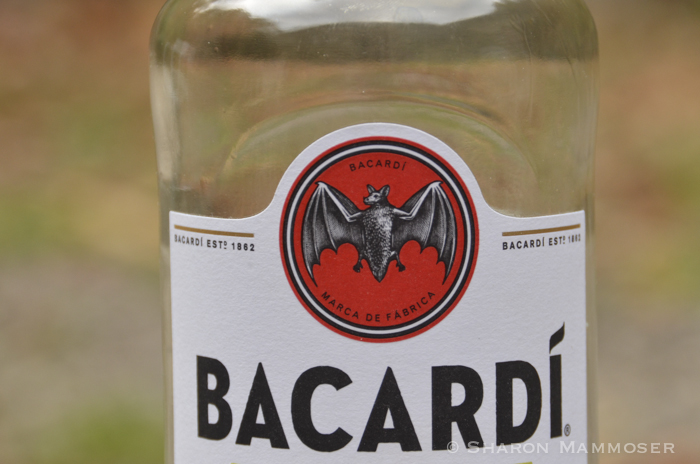 So last week’s puzzler–one of the most famous and recognizable logos of all time–the bat on Bacardi Rum. Do you know it?
So last week’s puzzler–one of the most famous and recognizable logos of all time–the bat on Bacardi Rum. Do you know it?
Before answering, let me tell you a funny story about my ignorance of alcohol. So I have been spending much of my time these days reading about bats in preparation for an upcoming two hour class that I am teaching at the Blue Ridge Community College. (If you are local to WNC, you can still register for this class!) I am enjoying this very much and learning an incredible amount of what I think of as fascinating facts about bats and their relationships with plants and animals.
There is a bat called the long-nosed bat that lives in the western United States and Mexico south. And there is a plant also in the west, called agave, that has developed a mutualistic relationship with the bat. The bat pollinates it. In nature, the bat cannot live without the plant (it feeds on nectar and pollen) and the plant cannot live without the bat. And of course, people take the agave and make it into tequila so you can enjoy a delicious margarita at your local Mexican restaurant.
So when I did that puzzler, I was thinking of tequila and not rum. Duh. Obviously these are not the same! It would probably be more fitting it the logo on tequila was a bat since without the bats we would lose tequila. (Although the tequila industry has found a way around this by using clones of the blue agave that they plant at the base of the original plants, thus taking bats out of the equation. The results however, are weaker plants that need many more herbicides and pesticides. Also resulting, are a decline of long-nosed bats since without allowing the succulents to flower, there is nothing for the bats to eat.)
Note to self: Tequila comes from agave; Rum comes from sugar cane.
The story of the logo of Bacardi is an interesting one that dates back to 1862. A man by the name of Don Facundo Bacardi Masso and his wife, Amalia Moreau decided to start a new business and developed a light rum with the purchase of a distillery in Santiango de Cuba. Amalia noticed a colony of fruit bats roosting in the eaves of the tin-roof distillery and suggested to her husband that their logo feature the bat.
Unlike the United States and many other countries where bats have a sinister image, in Don’s native country–Spain, and also in his new country–Cuba, the bat was a positive image in local folklore, representing good fortune. According to many of the indigenous people of Cuba, bats represent brotherhood, discretion and faithfulness.
Don Focundo thought his wife’s idea was a great one, knowing that local insectivorous bats feed on many insects that would otherwise harm the sugar cane. So the bat logo was born.
Interestingly, in those years, many of the people buying the product were illiterate but knew the bat symbol on the bottle and asked for “el ron del murcielago” or “the rum of the bat.”
…now you know.
Here’s the next puzzler–a lovely tree that produces something maybe even more beautiful than colorful leaves. You be the judge…

